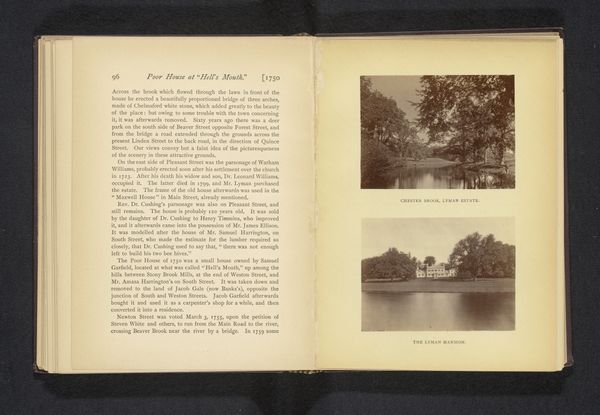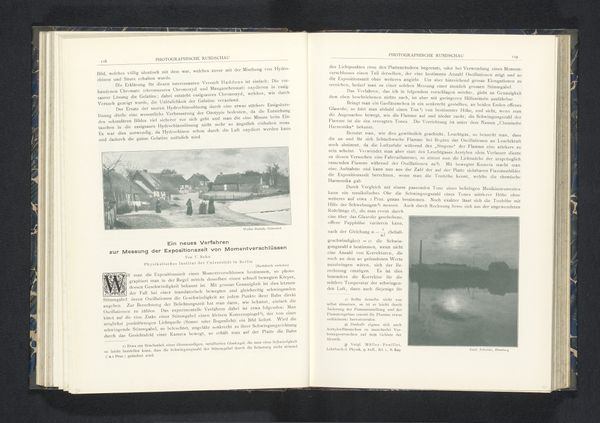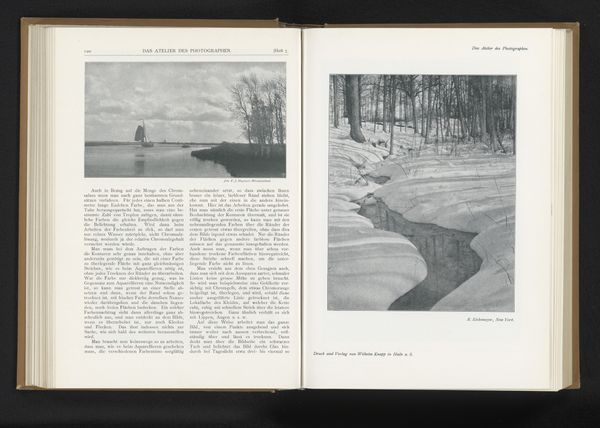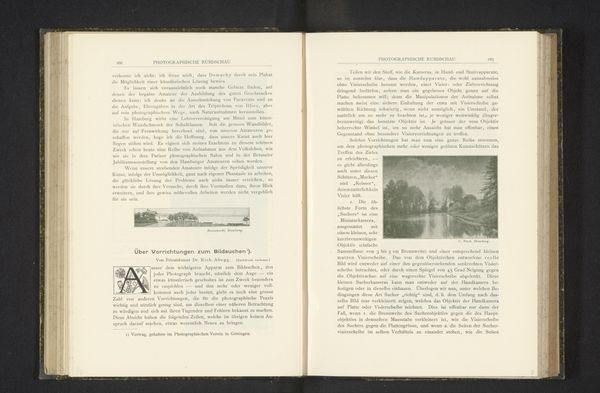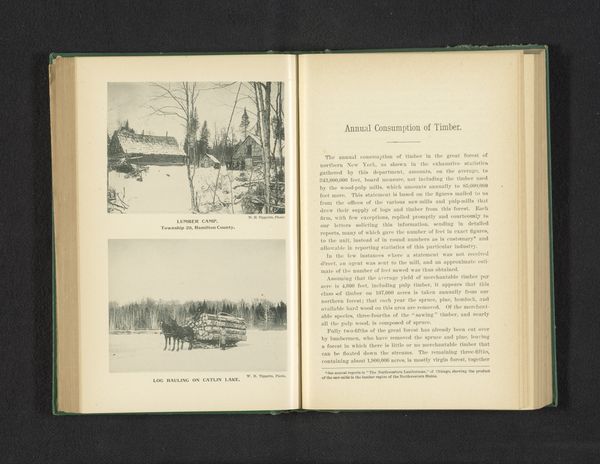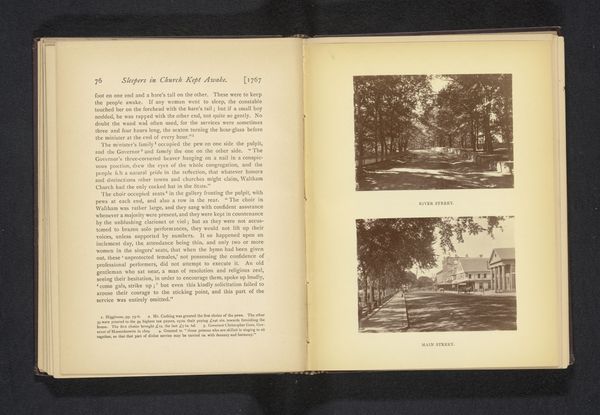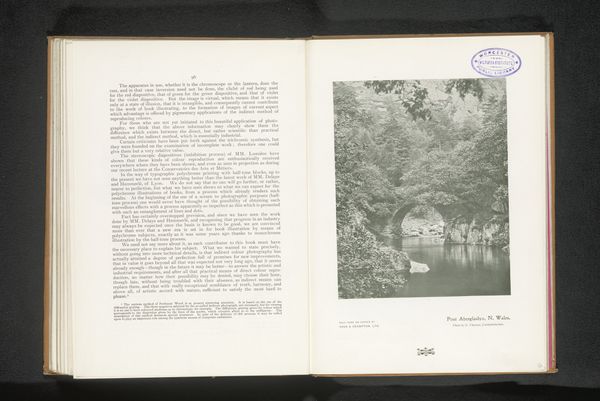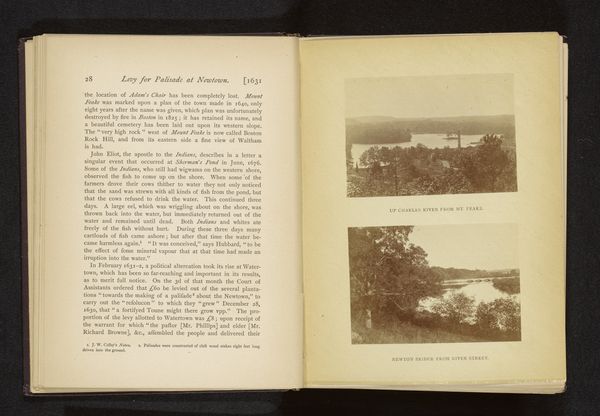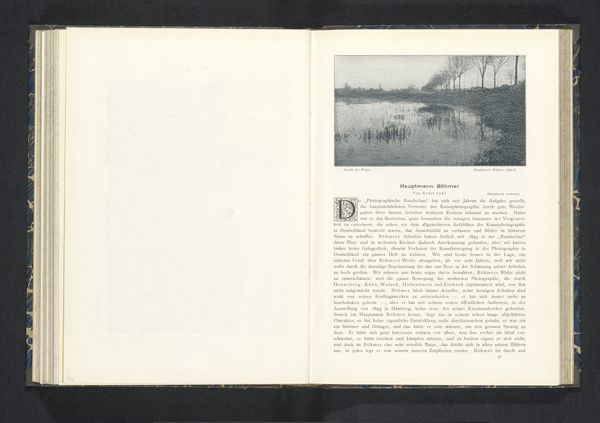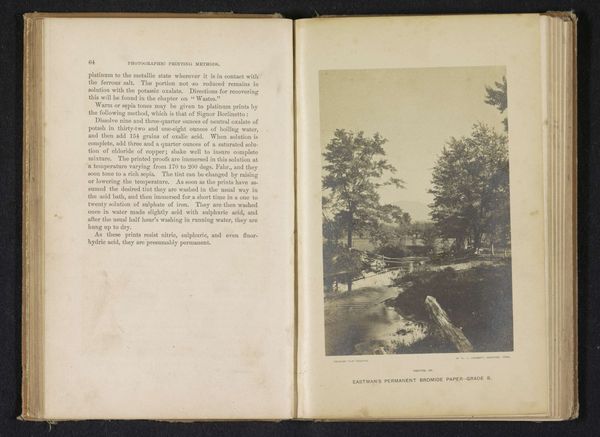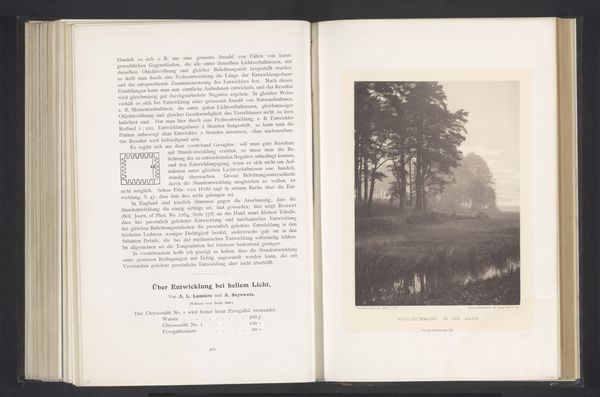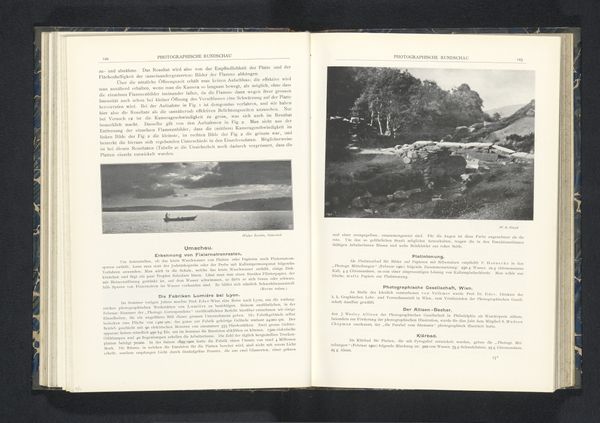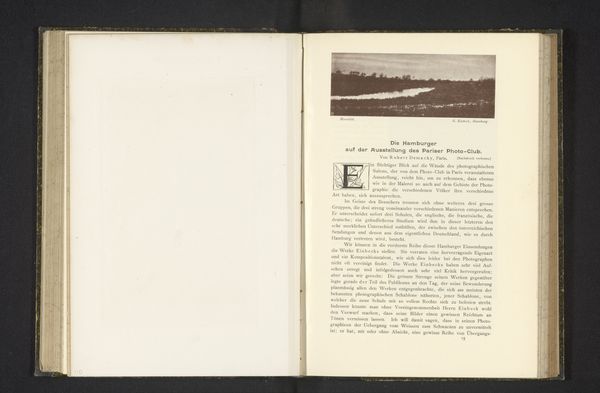
print, photography, gelatin-silver-print
# print
#
landscape
#
photography
#
gelatin-silver-print
Dimensions: height 66 mm, width 93 mm
Copyright: Rijks Museum: Open Domain
Curator: Today, we are looking at "Gezicht op een veerboot op een rivier," which roughly translates to "View of a ferry on a river." It is a gelatin-silver print by Thomas R. Lewis dating back to before 1879. Editor: It's immediately evocative, isn't it? There's a soft focus, and the sepia tones lend it a dreamlike quality. The contrast is delicate but provides good separation in tone for each area within the image. Curator: Indeed. Lewis seems to have deliberately utilized photography's potential for capturing atmosphere in this landscape view. The details of the steam ferry titled “The White Swan” against the lines of the trees, evoke a certain formal elegance, juxtaposed against the other scene titled “Harrisdoton's Grove and Fulmer's Landing,” presenting two idyllic natural retreats connected via waterway transport. Editor: I agree that he achieves a sense of measured serenity, which might offer insights into leisure and tourism during that period. By positioning a human-made construct amidst an obviously “natural” place, there also exists tension as to what relationship humans and nature will have on this land. Curator: Precisely. Consider, also, how the texture of the gelatin silver print emphasizes depth and light—a very controlled manipulation of light to present, not merely a topographical document, but a symbolic, idealized version of 19th century experience with waterways for pleasure boating. Editor: The symmetry is almost classical, wouldn't you say? It invites us to contemplate themes of progress, of human impact on the landscape. Furthermore, this placement inside of the book creates another frame on the overall work of the two landscapes. It asks its original readers to question the value of leisure and how we occupy our natural landscapes as they progress deeper into this text about the past. Curator: Yes, I agree that both formal structure and contextual readings can enrich our appreciation for Lewis' work here, the aesthetic choices in how the land is staged speaks volumes. Editor: Exactly! Whether considering line, composition, and treatment or viewing it within its socio-historical context. Each is critical for any study. Curator: Indeed. It leaves one with a profound sense of bygone-era’s values.
Comments
No comments
Be the first to comment and join the conversation on the ultimate creative platform.
